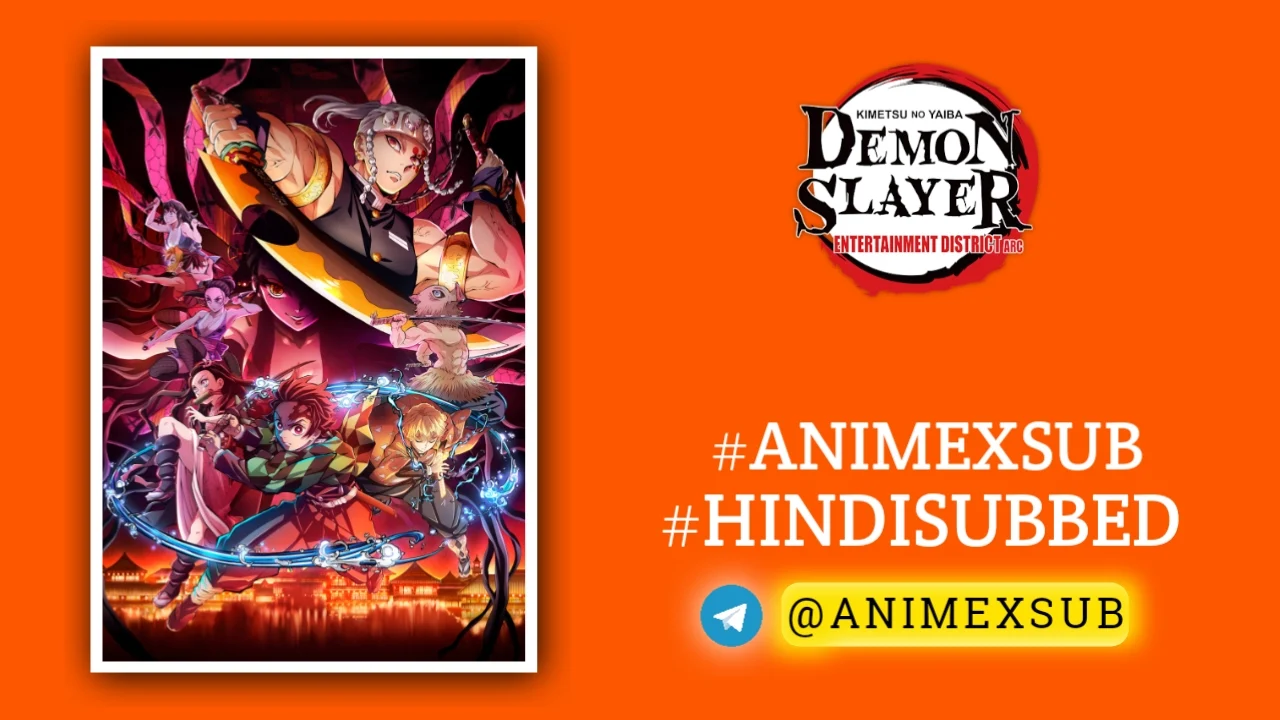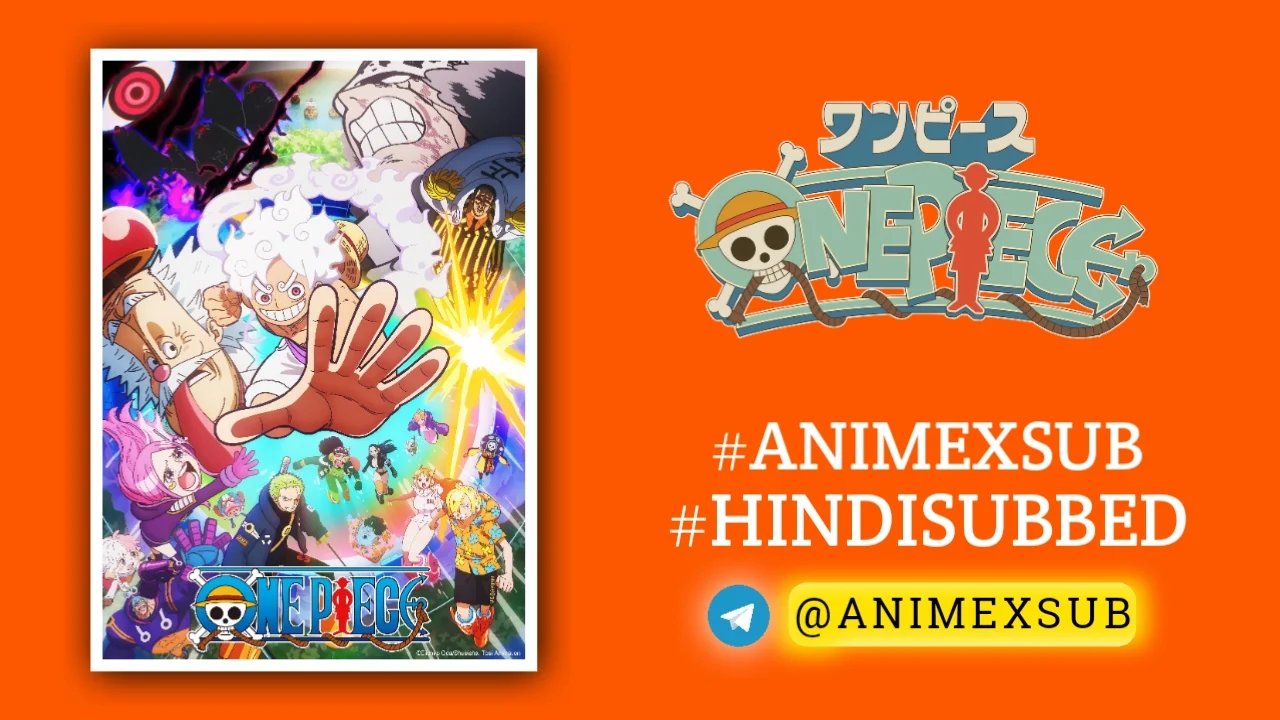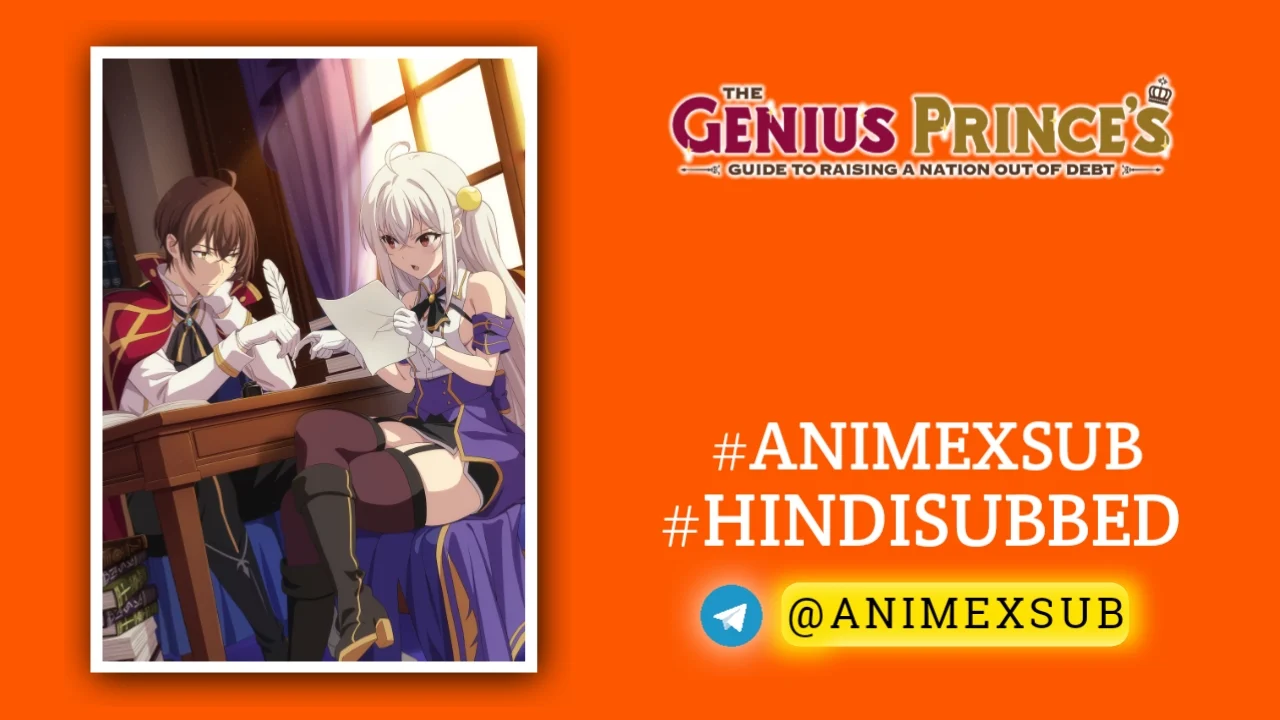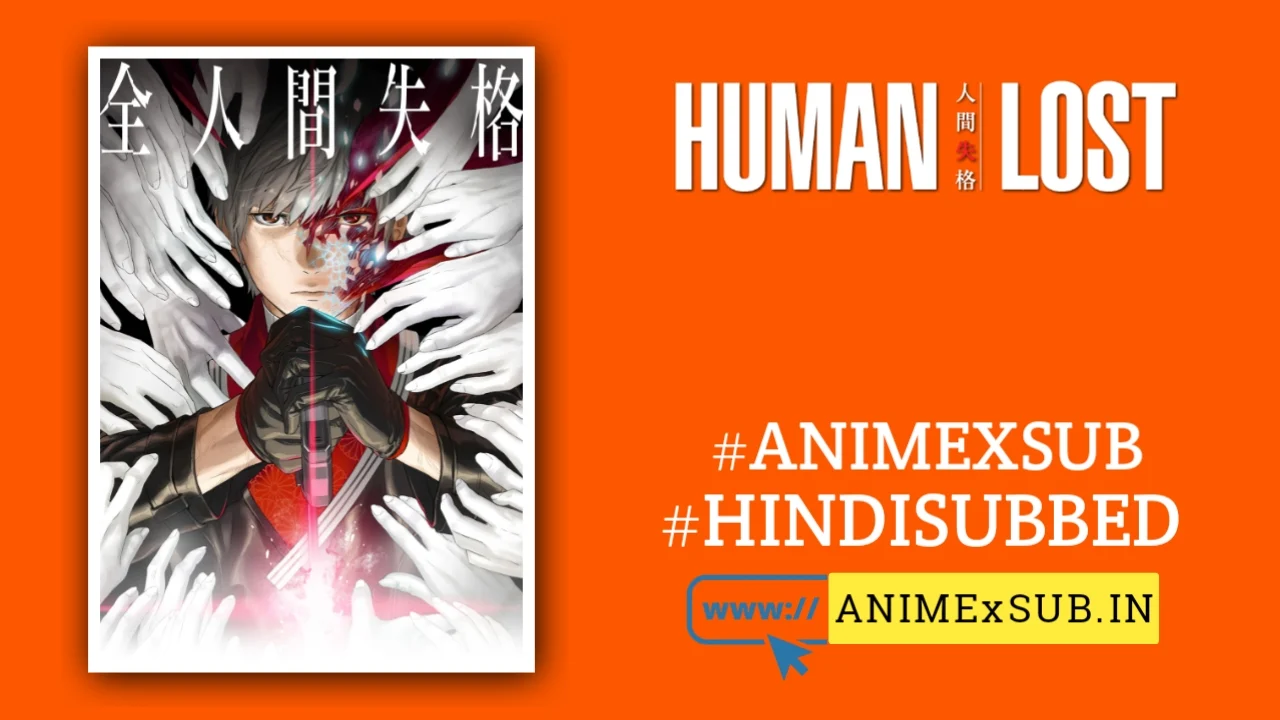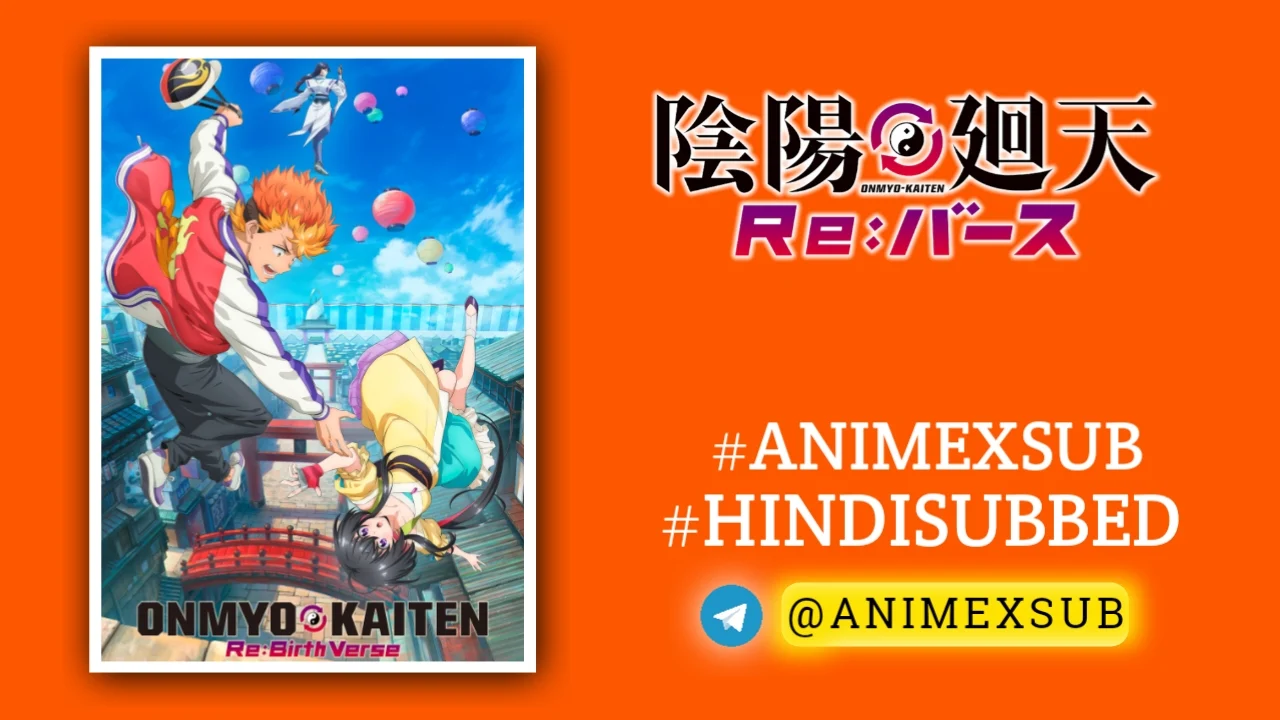
Onmyo Kaiten Re:Birth Verse Hindi Subbed [06/12] | Onmyou Kaiten Hindi Sub!!

Onmyo Kaiten Re:verse
Onmyo Kaiten Re:Birth VerseSynopsis
The anime is set in an alternate version of Heian-kyou, the old name of Kyoto and the capital during Japan's Heian era. This alternate version of the city is named Denji Heian-kyou. A delinquent high schooler named Takeru Narehira resides in our world, but after an unfortunate accident, is transported to Denji Heian-kyou. Here, he immediately meets Tsukimiya, a woman he has seen many times before in his dreams. Hardly a moment passes after that encounter when Takeru and Tsukimiya encounter an oni monster, and lose their lives. Takeru awakens, stunned to find himself again at Denji Heian-kyou. He puts together that he has the power to go back in time. Now he resolves to learn this world's version of mystical onmyōjutsu techniques, and become an onmyōji sorcerer to save Tsukimiya. (Source: Anime News Network)
Watch Trailer
Characters
Onmyo Kaiten Re:Birth Verse Season 1: A Bold, Flawed Fusion of Isekai, Time Loops, and Mecha Mysticism
Onmyo Kaiten Re:Birth Verse, an original anime from David Production that premiered in July 2025, arrives with a thunderous ambition to carve its own niche in the crowded Summer 2025 anime season. Blending isekai tropes, time-loop mechanics, and a visually striking mix of Heian-era aesthetics with futuristic technology, this series swings for the fences with a premise that feels both familiar and daringly experimental. Across its early episodes, Onmyo Kaiten delivers a chaotic, visually dazzling experience that thrives on its unique setting and high-octane action but stumbles in its narrative coherence and character depth. This review dives into what makes Season 1 a compelling yet divisive addition to the anime landscape, offering a critical lens on its strengths, weaknesses, and untapped potential—without any promotional fluff.
A World Like No Other: The Setting That Steals the Show
At its core, Onmyo Kaiten Re:Birth Verse is set in Denji Heian-kyo, an alternate version of Japan’s ancient capital where mystical onmyoji sorcery coexists with advanced technology. This fusion of Heian-era folklore—complete with oni monsters and shikigami summons—with a cyberpunk-inspired aesthetic is the show’s most striking achievement. The world feels like a love letter to Japanese mythology, reimagined through a lens of neon-lit futurism. Streets pulse with glowing hues, ancient shrines stand alongside towering mecha, and the black mist known as Yamikaoru conjures monstrous oni that feel ripped from folklore yet modernized with a menacing, otherworldly edge.
The art direction, courtesy of David Production, is a standout. The studio, known for Fire Force and JoJo’s Bizarre Adventure, flexes its visual prowess with vibrant color palettes, dynamic fight choreography, and detailed creature designs. The oni, in particular, are a highlight—twisted, massive, and imbued with a folkloric weight that makes every encounter feel like a clash with legend. The soundtrack, blending traditional Japanese instrumentation with electronic beats, enhances the atmosphere, especially in key moments like Tsukimiya’s unexpectedly EDM-infused ritual dance in Episode 4. This worldbuilding is where Onmyo Kaiten feels truly next-level, offering a setting that’s neither the generic European fantasy of most isekai nor a straightforward historical drama.
A Familiar Hero in an Unfamiliar World
The story follows Takeru Narihira, a delinquent high schooler with a heart of gold and a penchant for fistfights. Haunted by dreams of a mysterious girl named Tsukimiya, Takeru is thrust into Denji Heian-kyo after a fatal accident (notably, not via the tired Truck-kun trope but a motorbike crash over a cliff). There, he meets Tsukimiya in the flesh, only to face death alongside her when the Yamikaoru and its oni descend. To his shock, Takeru awakens again, caught in a time loop that resets him in Denji Heian-kyo, prompting him to train under the legendary onmyoji Abe no Seimei to save Tsukimiya and defy fate.
Takeru is a textbook shonen protagonist—hotheaded, loyal, and quick to throw punches. While his determination to protect Tsukimiya is endearing, his characterization feels frustratingly generic. He lacks the nuance of, say, Jujutsu Kaisen’s Yuji Itadori or Re:Zero’s Subaru, both of whom grapple with their flaws in ways that make them compelling. Takeru’s straightforward “punch first, think later” approach, while occasionally charming, grows repetitive, and his growth feels stunted by the show’s focus on action over introspection. Critics have noted that Takeru’s meathead antics and the show’s reliance on familiar tropes—like his instant infatuation with Tsukimiya—can make the narrative feel rote despite its innovative setting.
Time Loops and Mecha: A Genre Mashup with Mixed Results
Onmyo Kaiten’s blend of isekai, time loops, and mecha action is both its greatest strength and its Achilles’ heel. The time-loop mechanic, where Takeru relives events to alter outcomes, draws inevitable comparisons to Re:Zero, but it lacks the emotional gut-punch of Subaru’s suffering. Takeru’s loops, especially by Episode 4, introduce high stakes—like the devastating loss of allies during the Centennial Pandemonium—but the resets often feel like a narrative crutch, undermining the weight of consequences. The show hints at a multiverse-like complexity, with suggestions that Takeru’s loops might intersect with a larger cycle involving Abe no Seimei, but these ideas remain underdeveloped in the early episodes.
The mecha elements, powered by onmyoji piloting shikigami, are a visual treat. Episode 2’s focus on CGI-heavy battles showcases David Production’s knack for spectacle, with shikigami designs evoking Attack on Titan’s grit and SSSS.Gridman’s flair. However, the combat system, tied to the five elements, feels underexplained, leaving viewers intrigued but confused about its mechanics. The action is undeniably fun, but it often overshadows the story, making episodes feel like a string of set pieces rather than a cohesive narrative.
Characters: A Mixed Bag of Tropes and Potential
The supporting cast offers flashes of promise but struggles to break free from archetypes. Tsukimiya, voiced by Maaya Uchida, is a compelling figure in Takeru’s dreams but feels reduced to a damsel-in-distress in the real world, with her role as a ritual dancer only briefly explored. Yura, a brash onmyoji with kicking techniques, and Atsunaga, her serious partner, form a dynamic duo with hints of a tsundere romance that adds some emotional depth, particularly in Episode 3’s focus on Yura’s insecurities. However, their arcs are overshadowed by the show’s relentless pace, which prioritizes action over character development.
Abe no Seimei, the legendary onmyoji, is an enigmatic presence, but his subdued reaction to catastrophic events in Episode 4 raises questions about his motives. Is he a mentor, a manipulator, or something more? The show teases complexity but hasn’t yet delivered answers. The ensemble’s chemistry, especially during lighter moments like the festival in Episode 4, shows potential for richer interpersonal dynamics, but these are often cut short by the next oni attack or time reset.
Where It Stumbles: Narrative Overload and Missed Opportunities
The biggest critique of Onmyo Kaiten Season 1 is its overwhelming ambition. Episode 1 alone throws a deluge of elements—isekai transport, time loops, oni battles, mecha shikigami, and a futuristic-historical setting—at viewers, leaving little room to process. This sensory overload persists, with Episode 3 and 4 discussions on Reddit noting that the rapid pacing sacrifices worldbuilding and emotional weight. The show’s attempt to juggle multiple genres results in a narrative that feels “hollow” or “hodgepodge,” as critics have pointed out, with worldbuilding gaps and a lack of a compelling hook beyond its visuals.
The isekai elements, while refreshing for avoiding generic fantasy tropes, don’t fully capitalize on the unique setting. Unlike Dr. Stone, which uses its pseudo-isekai premise to explore science and society, Onmyo Kaiten leans too heavily on action, leaving Denji Heian-kyo’s geopolitics and cultural nuances underexplored. Takeru’s time-loop ability, while intriguing, lacks the narrative clarity of Steins;Gate or the emotional stakes of Re:Zero, making his resets feel more like a plot device than a profound journey.
A Glimmer of Hope: Episode 4’s Turning Point
Despite its flaws, Onmyo Kaiten shows signs of finding its footing by Episode 4. The Centennial Pandemonium, a festival-turned-battle, delivers the season’s most epic fight yet, with a massive oni and devastating losses that hit harder thanks to the episode’s focus on character bonds. Takeru’s backstory, briefly explored here, adds a layer of relatability, revealing his delinquent roots and the influence of his “sorta-gangster” parents. The episode’s emotional beats, like Yura’s despair and Takeru’s helpless cries as Tsukimiya falls, suggest the show can deliver pathos if it slows down to let these moments breathe.
Why It Stands Out (and Why It Doesn’t)
Onmyo Kaiten Re:Birth Verse is a paradox: a visually stunning, conceptually bold anime that feels both groundbreaking and frustratingly generic. Its setting and aesthetic are unlike anything else in the Summer 2025 lineup, offering a fresh take on isekai that avoids the usual fantasy clichés. Yet, its reliance on familiar shonen and isekai tropes, coupled with rushed pacing and shallow characters, keeps it from reaching the heights of its peers like Jujutsu Kaisen or Kaiju No. 8. The time-loop premise and mecha battles are exciting but need more narrative grounding to feel meaningful.
For fans of action-heavy anime with a taste for the unconventional, Onmyo Kaiten is a flawed gem worth watching for its visuals and potential alone. Reddit discussions highlight its cult appeal, with some calling it the “most under-watched show of the season” for its raw energy and intriguing mysteries. Yet, those seeking deep storytelling or complex characters may find it lacking unless future episodes build on Episode 4’s promise.
Final Thoughts
Onmyo Kaiten Re:Birth Verse Season 1 is a wild, uneven ride that dazzles with its visuals and stumbles with its storytelling. Its fusion of Heian-era mysticism, futuristic tech, and time-loop mechanics is a bold experiment that sets it apart from the isekai pack, but its overstuffed narrative and generic protagonist hold it back from true greatness. With David Production’s stellar animation and a world brimming with potential, there’s hope that later episodes—or a potential Season 2—can refine its vision. For now, it’s a thrilling, frustrating watch that’s best enjoyed for its style and ambition, even if it doesn’t fully stick the landing.
Where to Watch: Onmyo Kaiten Re:Birth Verse Season 1 streams on Crunchyroll and Prime Video, with new episodes airing Wednesdays.
Support Our Anime Community!
Love watching the latest anime? Help us keep uploading new episodes by join telegram channel ❤️
Join Now!








